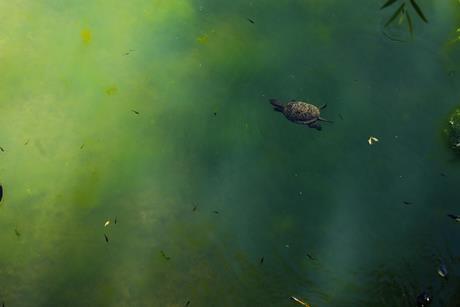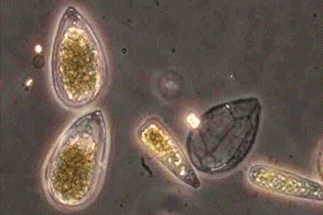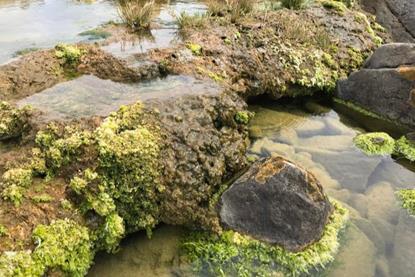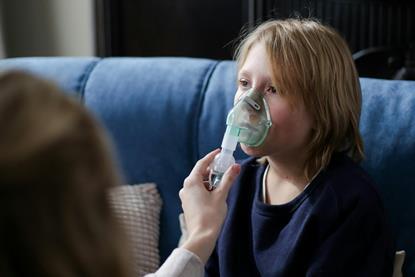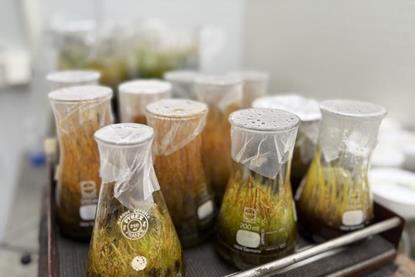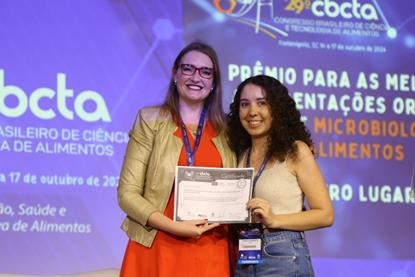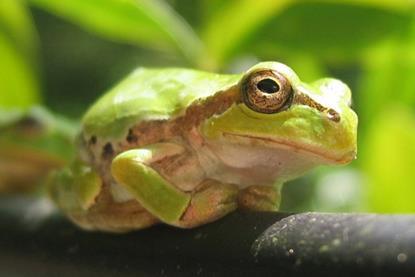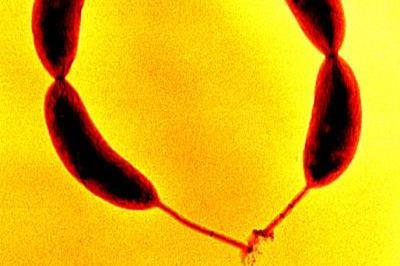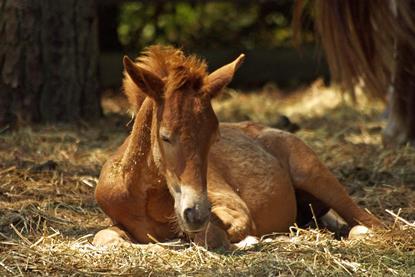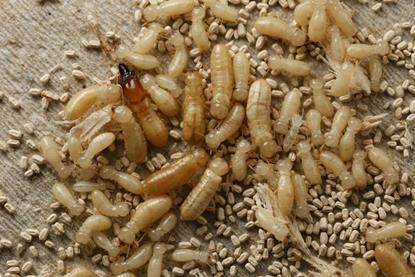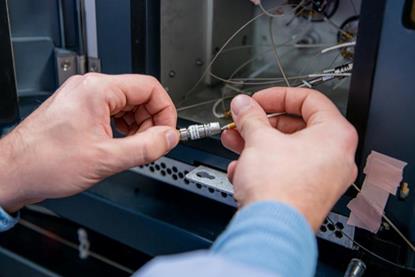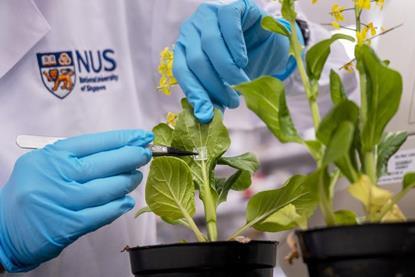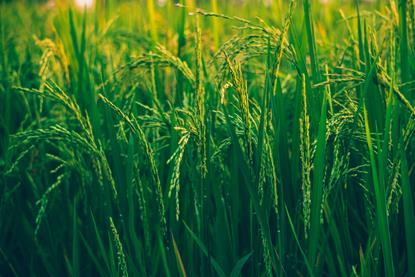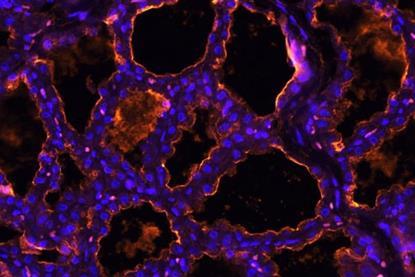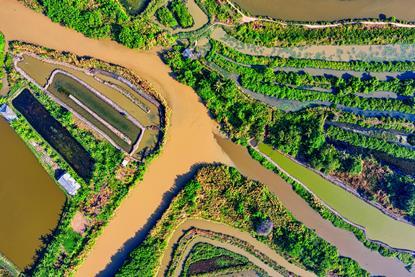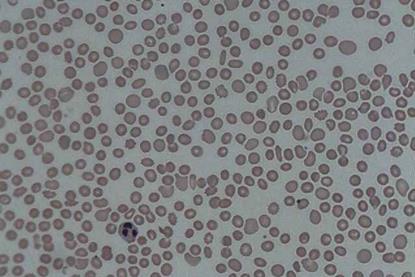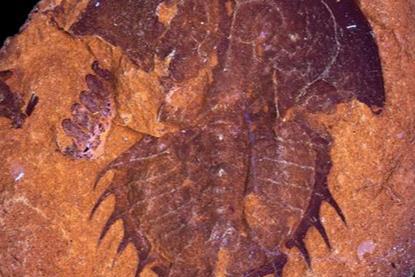Healthy land
Land has a wide variety of uses: agricultural, residential, industrial, and recreational. Microbes play a key role in the terrestrial ecosystem, providing symbiotic relationships with plants. Human use of land has led to the exhaustion of nutrients in soils, contamination of land, and a reduction in biodiversity. Applying our knowledge of microbes will be essential in restoring the biodiversity of affected ecosystems. Greater research into how microbes impact human life on land could all have a positive impact, by increasing crop production, repurposing areas of land and improving microbial biodiversity in soil, land, and water.
News
Strengthening asphalt roads with a unique green ingredient: Algae
Researchers propose a figurative and literal green solution to improve the durability of roads and sidewalks: an algae-derived asphalt binder. For temperatures below freezing, results indicated that the algae binder reduced asphalt cracks when compared to a conventional, petroleum-based binder.
Read story- News
Rising heat reshapes how microbes break down microplastics, new review finds
A new review examines how high and extreme temperatures influence the ability of microorganisms to degrade microplastics. The authors show that heat can both accelerate and suppress microbial breakdown of plastic particles, depending on conditions and the organisms involved.
- News
A ‘one-pot’ assay of or rapid portable identification of genotypes I and II African swine fever viruses
Researchers in search of an African swine fever virus genotyping method developed an isothermal ‘one-pot’ CRISPR-Cas12i3/Cas13d-based assay, designated OBServe.v2, to detect two amplified targets from multiplex recombinase polymerase amplification (RPA) in a single tube.
- News
A new study reveals the microbial biodiversity of dehesa soil
A study reveals the underground interactions between fungi and oomycetes in twenty Andalusian dehesas, wooded pasturelands typical of the Iberian Peninsula, making it possible to identify the role of water as the main driver of microorganism diversity and to shed new light on the pathogen responsible for la seca.
More Healthy Land
News
Breakthrough AI speeds up discovery of life-supporting microbes
Scientists have developed a powerful new artificial intelligence tool called LA⁴SR that can rapidly identify previously overlooked proteins in microalgae - tiny organisms that produce much of the Earth’s oxygen and support entire aquatic ecosystems.
- News
Can an electronic nose detect indoor mold?
Researchers have developed an electronic nose that can reliably sense and identify mold, which causes various health issues for humans and animals, as well as damage to homes and other buildings and structures.
- News
Scientists discover fungus that kills toxic algae threatening human health
A team of researchers have discovered a previously unknown species of marine fungus that can kill harmful, bloom-forming algae. The new species, Algophthora mediterranea, is a form of microscopic chytrid fungus that can occupy a broad range of hosts.
- News
Study showcases resilience and rapid growth of ‘living rocks’
South Africa is home to some of the oldest evidence of life on Earth, contained in rocky, often layered outcroppings called microbialites. Like coral reefs, these complex “living rocks” are built up by microbes absorbing and precipitating dissolved minerals into solid formations.
- News
Soil bacteria and fungi emerge as a top predictor of childhood allergic disease
The unique blend of fungi and bacteria in a region’s soil may be the strongest factor explaining its rates of childhood allergic disease, with certain assemblages of soil critters appearing linked with better health outcomes, according to new research.
- News
Moss and symbionts offer a promising solution for removing metals from mining and forestry-impacted waters
New findings shed light on the mechanisms behind a natural purification process and identify the key microbial “teammates” that enable mosses to remove metals from water. The new study reveals that mosses do not remove metals alone. The key is the cooperation between the moss and its microbial symbionts.
- Careers
CBCTA 2024 oral presentation winners: Isabella and Lia take home the honours
Letters in Applied Microbiology sponsored the best oral presentation award at the 29th Brazilian Congress of Food Science and Technology (CBCTA 2024). Winner Isabella Bassoto Xavier and runner-up Lia Mariano Aquino take a dive into their research.
- News
Gut bacteria from amphibians and reptiles achieve complete tumor elimination
Researchers have discovered that the bacterium Ewingella americana, isolated from the intestines of Japanese tree frogs (Dryophytes japonicus), possesses remarkably potent anticancer activity.
- News
Swedish freshwater bacteria give new insights into bacterial evolution
Researchers analyzing the DNA of all known Caulobacterales species, including newly collected samples from Swedish and Finnish forest lakes, discovered that several freshwater species lacked more than a hundred genes typically linked to the group’s complex lifecycle.
- News
Novel kirkovirus may be associated with colitis in horses
In a pilot study, researchers have found a novel kirkovirus that may be associated with colitis – and potentially small colon impactions – in horses. The study could offer a route to new therapies for horses with colitis symptoms from unknown causes.
- News
Fecal tests reveal active termite attacks
Termite pellets can linger long after the insects that dropped them have disappeared. By testing for microbes in the excrement, researchers can distinguish old droppings from fresh, and whether a colony is actively chewing its way through a home.
- News
Unique bond identified as key to viral infection speed
Viruses are typically described as tiny, perfectly geometric shells that pack genetic material with mathematical precision, but new research reveals a deliberate imbalance in their shape that helps them infect their hosts.
- News
Scientists create microneedle system to deliver living biofertiliser directly into plants, boosting growth with less waste
A dissolving patch delivers beneficial microbes into leaves and stems, speeding growth in vegetables while using over 15 per cent less biofertiliser than soil application.
- News
Rice resists change: Study reveals viral tools for probing gene function fall short
Researchers tested two popular viral vectors - barley stripe mosaic virus (BSMV) and foxtail mosaic virus (FoMV) - to see if they could temporarily switch genes on or off in rice (Oryza sativa). They found no evidence that these virus-enabled reverse genetics (VERG) techniques work in rice.
- News
Receptors in mammary glands make livestock and humans inviting hosts for avian flu
A new study shows that the mammary glands of several other production animals besides cows – including pigs, sheep, goats, beef cattle and alpacas – are biologically suitable to harbor avian influenza, due to high levels of sialic acids.
- News
New review reveals how microbial communities accelerate the global spread of antibiotic resistance
A new scientific review has uncovered how complex microbial communities, including those in the human gut and the natural environment, act as powerful engines that drive the evolution and spread of antimicrobial resistance.
- News
Institutions team up to advance first AI-designed mRNA vaccine against deadly tick-borne disease
Scientists are developing what could become the world’s first mRNA vaccine against severe fever with thrombocytopenia syndrome (SFTS)—a tick-borne viral disease associated with this condition.
- News
Horseshoe crab fossil reveals early mass-burial event and ancient microbial attack
A remarkably preserved horseshoe crab fossil from North America offers rare insight into some of the earliest known cases of animal disease in a Late Carboniferous swamp – more than 300 million years before the age of dinosaurs.
- Careers
Summer studentship: Lucy creates a synthetic microbiome to study mosquito-borne diseases at different life stages
Lucy Ella Malvern reports back on her AMI-sponsored summer studentship which investigated microbiome assembly in mosquitoes across developmental stages.




